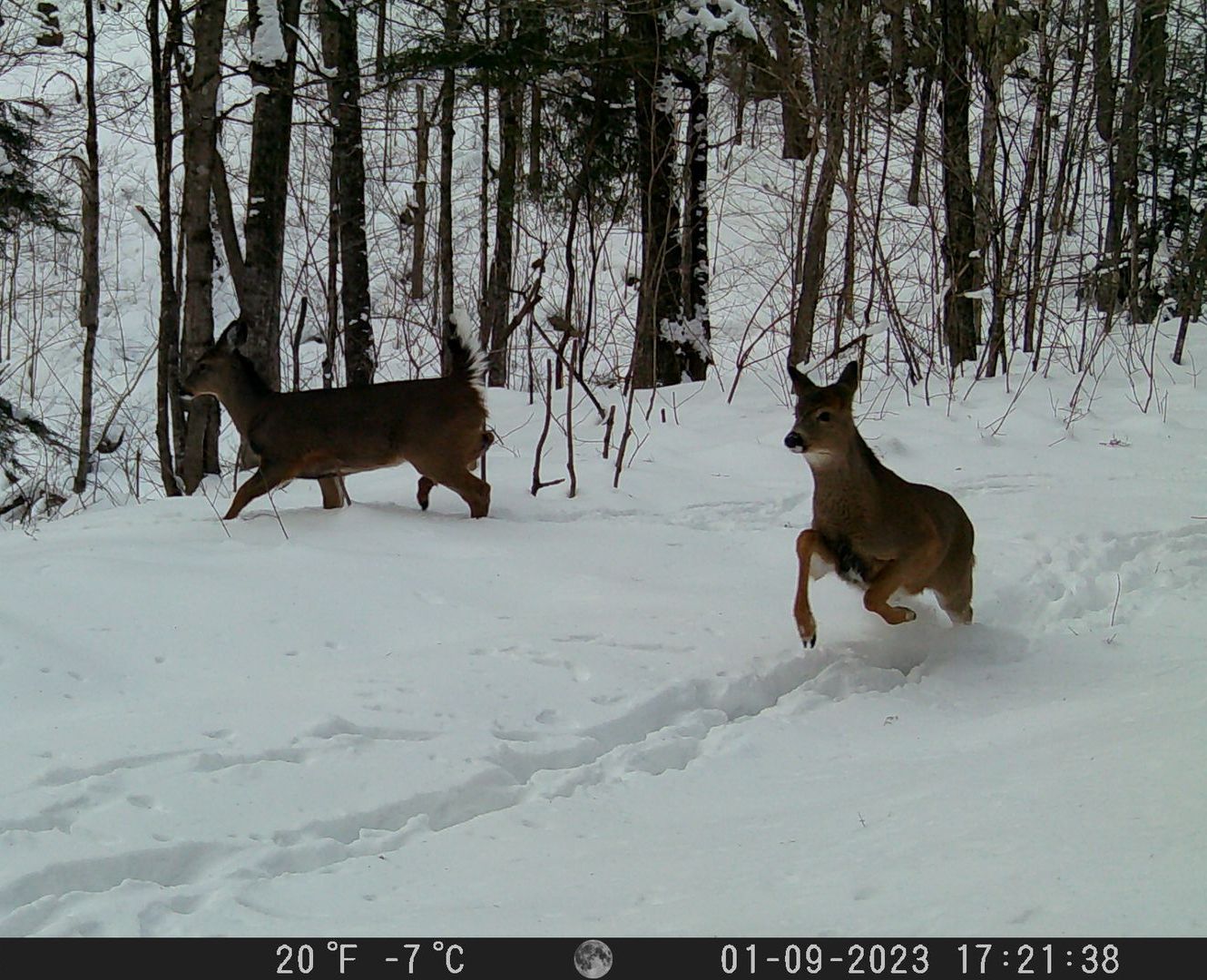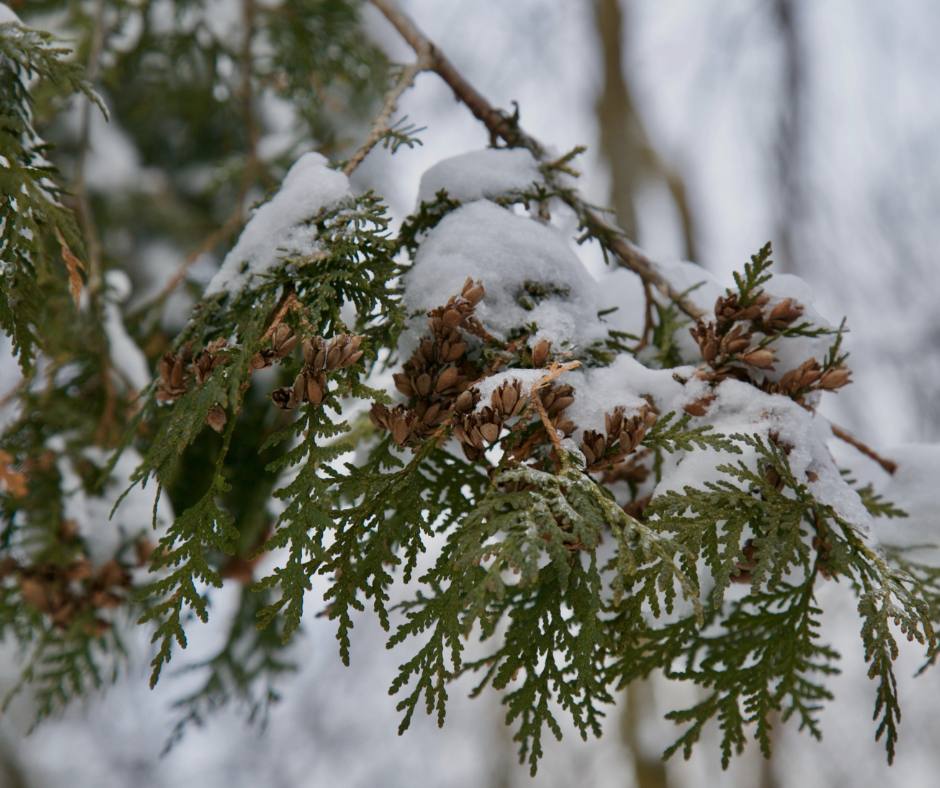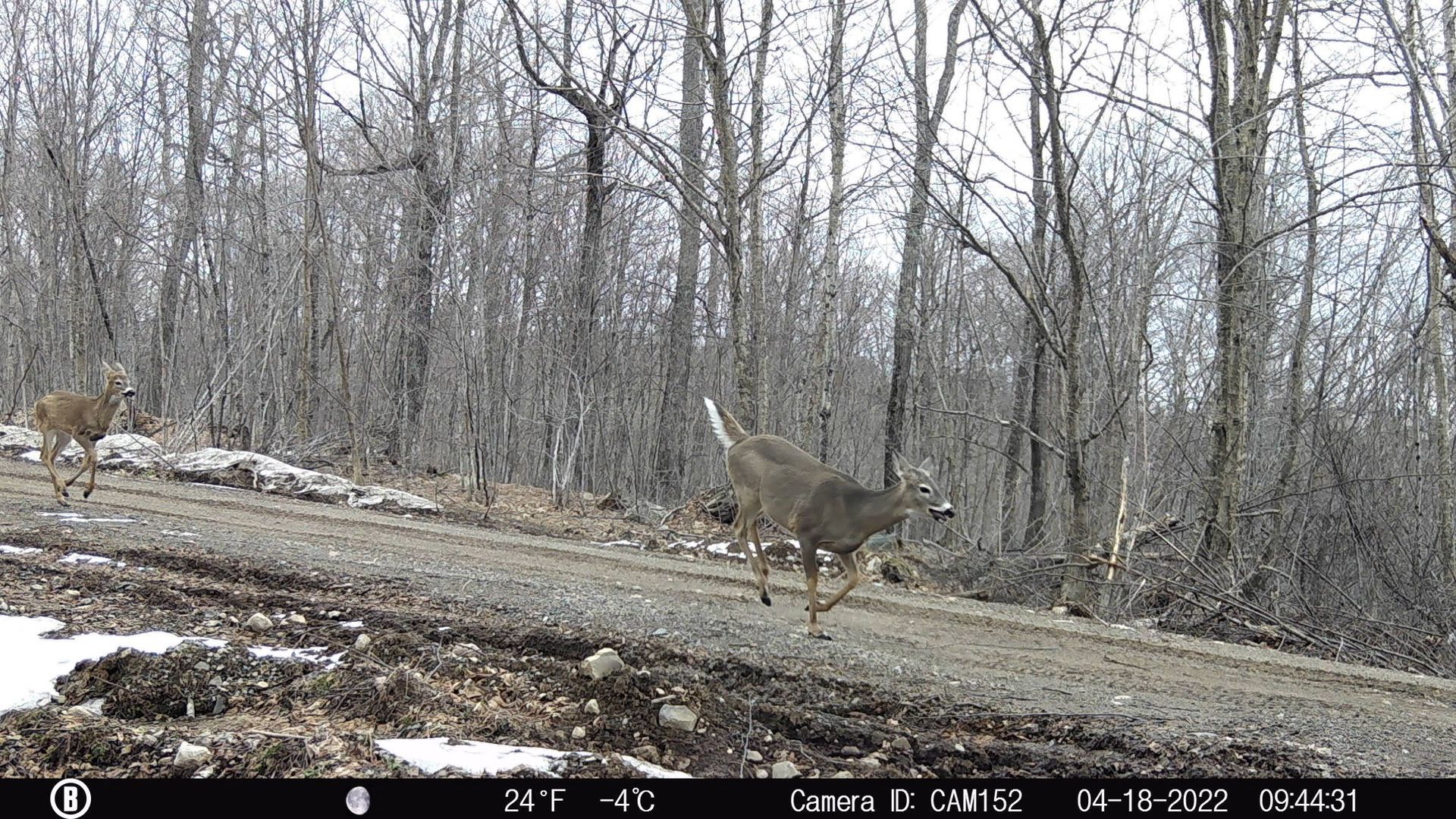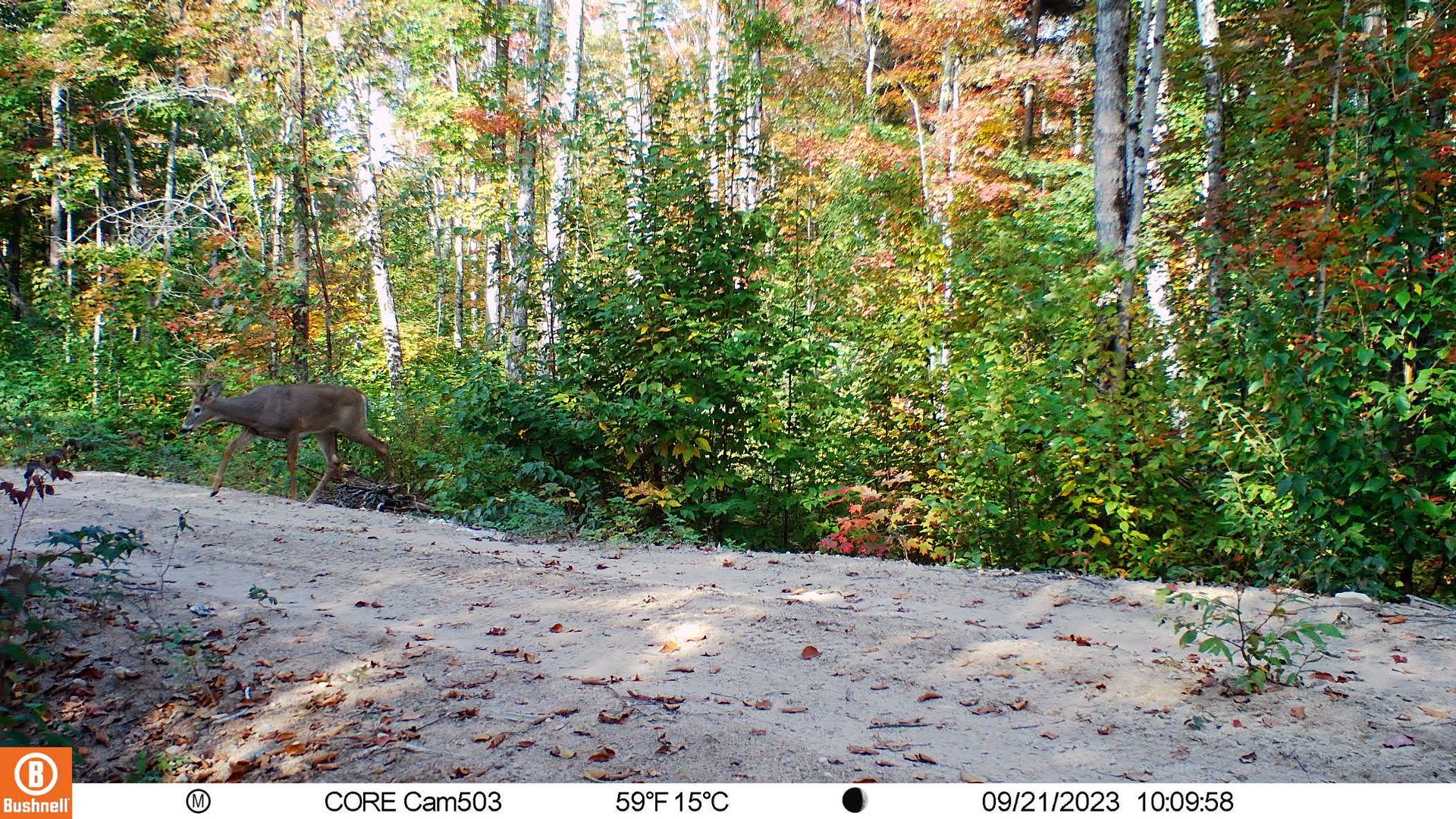Wildlife Research Project
Cold World: Deer Wintering Yards
Winter is a challenging season for many creatures and white-tailed deer are no exception. Have you ever wondered how these animals brave the freezing temperatures and navigate through snow-covered landscapes? The answer lies in the strategic selection and utilization of wintering yards.
Migration
Wintering yards are considered crucial for the survival of white-tailed deer, particularly during severe winters. Selected to fulfil their diverse needs, wintering yards may be characterised as mature, dense stands of coniferous trees, distinguished by their thick canopies which provide protection against snow accumulation and harsh winds. Subsequently, this sheltered environment allows deer to forage and navigate easily, in addition to reducing their exposure to predators.
Without the protective canopy of a wintering yard, locomotion becomes increasingly challenging as deer are left vulnerable to accumulating snow.
Deer typically initiate migration to these wintering yards in response to falling temperatures and/or increased snowfall, a behaviour learned from previous generations, with young deer following older individuals along established migration routes. Once established, deer exhibit strong fidelity to specific wintering yards, returning to the same location year after year.
Survival
Within deer yards, the landscape comprises a diverse array of woody vegetation and conifer leaves, which are crucial elements of the white-tailed deer's winter diet. As deer forage for sustenance, they primarily rely on woody browse, encompassing twigs, buds, and bark from trees and shrubs. However, this diet comes at a cost as these foods are energetically expensive to consume and challenging to digest, often resulting in weight loss for the deer. While certain species, such as white-cedar, can sustain deer throughout winter without causing significant weight loss, in most cases, depending solely on dormant browse only serves to mitigate the loss rather than prevent it entirely.
Woody twigs and buds of deciduous trees and shrubs, in addition to leaves of hemlock and eastern cedar (seen above), are commonly browsed by deer during the winter time.
To cope with the nutritional challenges posed by diets of woody browse in winter, deer accumulate body fat during autumn when nutritious food sources are abundant. Consequently, when deer are unable to build up their fat reserves before the onset of heavy snowfall, their increased reliance on winter browse tends to have a profound impact on the herd's ability to survive. This heightened dependence on winter forage means that female deer experiencing a significant decrease in nutrition during the winter months may suffer higher rates of fawn mortality at birth.
Congregating in wintering yards is also thought to assist white-tailed deer with predator avoidance. By conserving energy and limiting travel, deer decrease their chances of encountering predators and improve the herd's overall survival prospects. Moreover, the concentrated presence of deer in wintering yards allows for collective vigilance against potential threats. Capitalizing on safety in numbers, the establishment of well-trodden communal trails winding through dense vegetation offers ample opportunities for deer to evade detection and elude predators, further bolstering their survival mechanisms.
The Future
The success of deer wintering yards is contingent upon various environmental factors. Habitat destruction and fragmentation due to human activities can severely impact the availability of suitable wintering areas. Site selection becomes challenging as urbanization encroaches on natural habitats, disrupting traditional migration patterns and limiting the areas where deer can find refuge.
Sustainable forest management is pivotal for supporting the vitality of deer yards, with a particular focus on understanding their utilization. Integral to this effort are deer browse surveys, which can illuminate the type, quantity, and use of woody browse available in a given yard. These surveys not only indicate the browsing preferences of deer; they can also be used to determine the number of deer that can be sustained in a specific yard - a concept referred to as carrying capacity.
Fish & Wildlife Conservation Technician students from Sault College perform a deer browse survey at the Kensington Conservancy's Ripple Rock Preserve. Surveys like these help assess the quality of deer wintering yards. Credit: Rob Routledge.
As a whole, collaboration between forest managers, conservation organizations, and stakeholders is essential for implementing effective forest management practices that prioritize the needs of deer and other wildlife species. By integrating scientific research, monitoring efforts, and community engagement, forest management services can ensure that management practices support the long-term prosperity of deer yards and contribute to the conservation of biodiversity in forest ecosystems.
White-tailed deer are commonly captured on our trail cameras. These images were captured through our trail camera study.
As stewards of the environment, we hold the responsibility for preserving and protecting the natural world for present and future generations. If you are interested in playing a direct role in the preservation of our lands, please consider donating to us here.
This piece was developed as part of our Wildlife Research Project.
Our project is made possible thanks to a passionate group of volunteers and collaborative partners.
You can learn more about our partners here.








